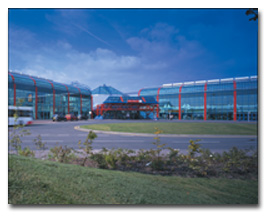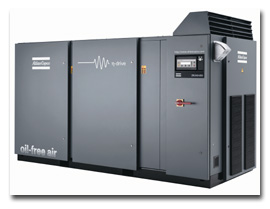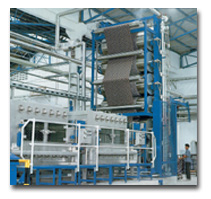man-made fiber market.An August 19, 2003, Wall Street Journal editorial offered an interesting
perspective on the United States trade deficit with China. Rather than accept the fact that the
current deficit is hurting US industry, the Journal posits:[I]n the first half of this year,
[Chinas] overall trade deficit with all countries fell 70 percent, so that it represented just 1.3
percent of its two-way trade.Chinas surplus with the United States is growing because companies
already exporting to the United States have been moving their production into China. A study by The
Institute of International Economics showed that 75 percent of the marginal growth in Chinas
exports to the United States was the result of this displacement effect.This is particularly true
for such labor intensive goods as toys and footwear which account for 28 percent of Chinas exports
to the United States. As Chinas market share of the US market in these goods [rose] to 60 percent
from less than 10 percent, the combined market shares of South Korea, Taiwan and Hong Kong [fell].
The same pattern holds true for other goods assembled in China.What an intriguing thought. If this
is true for footwear and toys (to say nothing of the ubiquitous other), is it also true for
man-made fiber Further, will displacement roll into pastures greener than Chinas Is China our only
import warrior, or should we be looking for the next displacement candidate A search of recent
literature suggests production changes among nations outside Chinas circle may really be the
long-term threat.Setting The StageMan-made fibers no longer are the sole purview of Europe and the
United States. In the United States, fibers were a net export industry until the early 1990s, at
which time huge amounts of fibers, fabrics and garments from Asia began to land on US shores an
onslaught fueled by a combination of national subsidy and investment policies, weakening Asian
currencies, and national fiscal determination to export Southeast Asia out of the economic
doldrums. South Korea, Hong Kong and Taiwan, particularly, binged into many markets but proved
merely to be the vanguard of a movement yet unfolding the arrival of China in the man-made fiber
field. China, blessed with hordes of people and unencumbered by a market economy that would tend to
exercise investment controls in low-margin businesses, arrived with a flourish and, in the process,
swept aside the growth ambitions of its continental neighbors in favor of a China-first policy.
Asian man-made fiber production grew from 45 percent of world production in 1990 to 72 percent in
2002. Simultaneously, Chinas share of Asian production grew from 20 percent in 1990 to more than 44
percent by 2002. Additionally, China achieved its dominance with a 72-percent operating rate as
late as 2002. If it manages to up that rate, it will inflict carnage on competitors.In the early-
to mid-1990s, Asian economies suffered in the shadow of Japans banking crisis and anticipated their
own similar fates, which were partially realized in the late 1990s with the horrific Asian currency
devaluation crisis. Early in the decade, Asian money flowed into the United States intent on
investing in man-made fiber production. States and localities stumbled all over one another to host
the new multibillion-pound facilities so easily promising jobs and economic nirvana for the
participants. Soon the Asian currency crisis caught up with Asian manufacturing in the United
States, and the direction changed to investment at home. After years of dependency on international
fiber sources, Asian fabric and garment manufacturers discovered that all of the added value
associated with garment manufacturing and exporting could remain in the host country if that nation
produced fibers and fabrics in addition to garments. There is no single day or event that marked
this epiphany, but a glance at Table 1, Total Man-Made Fiber Production, provides several
clues.Total world production of man-made fibers has grown at a 5.4-percent compounded annual rate
since 1990. As will be shown later, most growth came in filament production, but the point of Table
1 is to expose the geography of the production changes. As expected from even a cursory reading of
the contemporary press, man-made fiber manufacturers in industrialized nations have taken it on the
chin in the past 12 years. After 15-percent growth from 1990 to 1999, US production retreated to
1990 levels by 2001. Statistically, over the 12-year period, the industry showed a 0.15-percent
growth a mere rounding error. Western Europe struggling even more with high wages, social costs, a
wavering but largely strengthening euro (particularly in the 1999 to 2002 time frame) and low
returns in fibers lost position at the rate of 1.6 percent annually. Not surprisingly, however,
Asian production of man-made fibers leaped at a 9.6-percent annual rate from 1990 through 2002.
Leading the charge was China with a 17-percent-compounded rate of growth, but, somewhat
surprisingly, India and Indonesia stepped up commitment to man-mades with shipment from each
growing at about 12 percent annually. It appears South Korea and Taiwan combined, after early 1990s
run-ups of fiber production tied to local fabric and garment manufacturing, have been forced to see
the error of their ways and have cut production to below 1999 levels. China sucked up the excess
totally in line with the premise of the Wall Street Journal editorial.Missing from most current
literature are the positions of India and Indonesia in the man-made fiber race. During the 1990s,
both countries quietly raised capacity and production of both filament and staple to world-class
levels. Admittedly, investment slowed in the late decade, but recent announcements, particularly
from India, indicate that nations man-made fiber industry intends to become a world player. In an
August 18th article in the India Times, Union Textiles Minister Hussain announced formation of a
high-powered committee to chalk out the future growth strategy for various segments of [the]
textiles sector [W]e are setting up a committee to look into the problems of the sector to chart a
growth strategy for [the] post-Multi-Fibre Agreement era [Hussain] said textiles contributed about
8 percent to the countrys GDP [and] 30 percent to the countrys total exports [and] could reach $50
billion in the next five years after dismantling of quotas. This sounds like a warning shot across
the bows of traditional fabric and garment exporters to the United States. India boasts relatively
stable political and economic environments and likely will succeed in improving its share of world
exports. Recent unrest in Indonesia will deter investments, at least in the short term. Long-term,
it seems the logic prompting the original expansion of man-made fiber production will resurface and
compete again.The New Product MixTables 2 and 3 document a change long proposed by US fiber
manufacturers but mightily resisted by domestic fabric and garment manufacturers the switch to
filament fabrics from staple to enjoy the efficiencies of filament in fabric manufacturing.
Comparing Table 2, Man-Made Filament Production, to Table 3, Man-Made Staple Production, it easily
is seen that increases in world staple fiber production have lagged seriously behind filament. In
1990, filament represented 47 percent of total world man-made fiber production. By the end of the
decade, filaments share had risen to almost 57 percent.The interesting statistic in filament
production is its relatively slow growth in the last few years of the 1990s. Filament capacity was
installed in the go-go days of mid-decade fake silk. The consumer maintained her polyester/cotton
blend tendencies, however, and forced filament capacity utilization to lag, the most recent score
being 2002s achievement of 74-percent utilization. As filament production rose at an almost
7-percent annual rate, staple, with one geographic exception, was lagging seriously behind. As
calculable from Table 3, world staple manufacturing grew from 1990 through 2002 at a 3.33-percent
annual rate. While North American and European production fell annually at 1.5-percent rates, Asian
production rose at a 7.6-percent rate, virtually all of which occurred in China, India and
Indonesia. To be sure, incremental increases occurred across the entire Asian continent, but the
magnitude of change in these three countries eclipsed all the rest. In the 1990- 2002 period, total
world staple production rose from 17 billion pounds to 26.5 billion pounds. Total Asian production
increased by 10 billion pounds, including 6 billion in China and 2.5 billion in India and Indonesia
combined. Obviously, these three countries have focused their fiber strategies on polyester staple
to support lightweight garment manufacturing. Opportunities for import relief appear remote because
these same countries control 43 percent of available world capacity against their current 44
percent of world production. The list of new production plants in China and India is long evidence
of an attempt to increase capacity control even further. Looking To The FutureIt appears that the
Wall Street Journal editorial is in part correct, even for the man-made fiber business. China
certainly is a power in Asian textile politics and economics. Warning signs are appearing, however,
suggesting that the US fiber and textile industries had better not lose sight of the ever-shifting
geography of man-made fibers. Ever since World War II, the West controlled man-made fibers and
textiles. Recent geography appears to place the epicenter of textiles (and a number of other
non-textile products) in east Asia, specifically China. Slight rumblings are being heard, in part
driven by the expectation of truly open markets after full institution of the World Trade
Organization in 2005, but in other part driven by nationalistic hopes of displacing a substantial
portion of Chinas market share and becoming the next major player in the American textile market.
Download
Fiber World Feature Tables
Editors Note: This analysis focuses on three man-made fibers: nylons, including aramids;
polyesters; and acrylics, including modacrylics. Space limitations prevent inclusion of other
fibers, particularly olefin and spandex, although Textile World is developing similar analyses of
these fibers for future issues.
October 2003






 Universal
Universal A
A


